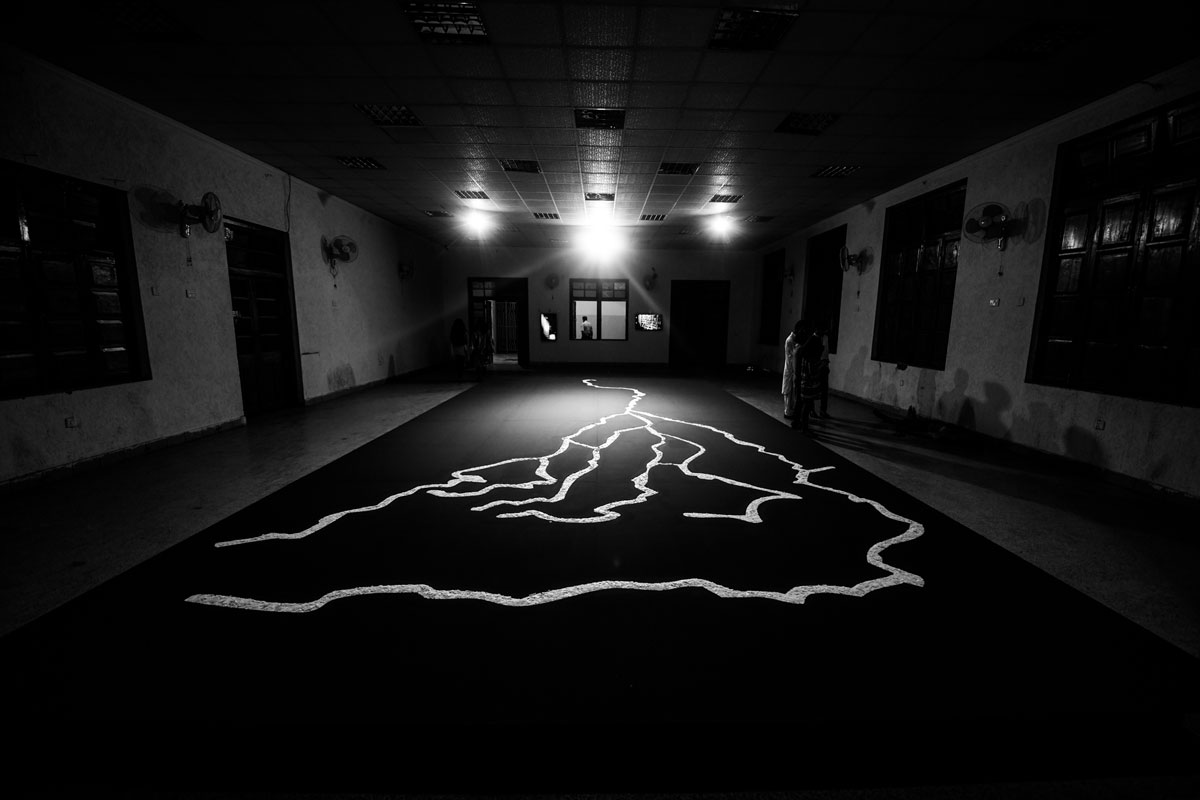Richard Humann is a New York City-based neo-conceptual artist. His work has been exhibited at the Kemi Art Museum, the Tampere Art Museum, the Aine Art Museum, Museo Cristóbal Gabarrón, the Macao Art Museum, the Daelim Contemporary Art Museum, the Youngeun Museum of Art, and the Kaohsiung Museum of Art, among other institutions. Much of his work is considered to be minimal, not so much in the art historical sense, but in that he strips away what he feels is not necessary to tell the story of the piece. His goal is to have the art that he creates read like poetry. He wants it to be a short distillation of a concept that touches not only the heart, but the mind as well. That is the thread that runs throughout his work, whether in drawings, sculptures, videos or installations. Language, words, dissected letters, codes and visual metaphors often become the mechanism for the dissemination of his intent.
For his installation for KB17, A Tide of Credence, Humann revisited his 2013 work, The Same River Twice, in which he took a map of the Hudson River (on the banks of which he was born and raised) from its head north of Albany, New York to its eventual flowing out past the island of Manhattan. He then transposed the shape onto a large pedestal and cut the river out from it. He gathered many of the writings that inspired him from his youth, including excepts from The Brothers Karamazov, The Sirens of Titan, Sweet Thursday, Gulliver’s Travels, as well as from poems by e.e. cummings, among other works, and then filled the shape of the river up with the words of excerpts that he had disassembled. These writings were the inspiration that led the artist to move to New York City so many years ago. As Humann states, “The river lifted me up and floated me downstream, where I began my life as an artist.” Like New York, Karachi is a city of migrants. In A Tide of Credence for KB17, he has recreated the Indus River with its tributaries that flow down through Pakistan to the Arabian Sea. He asked Pakistani immigrants living in New York to write down their hopes, dreams, and beliefs in their native Urdu. He then cut up the written text in an effort to reduce it to its purest meaning and placed it into the riverbed. He also took excerpts from poetry, history and literature, both historical and contemporary, and did the same. This collection of personal and collective accounts flows with the tide of the river, from its northern, eastern and western borders, and works its way south, towards Karachi.

A Tide of Credence, 2017.
Wood, paper, ink
5 x 985.5 x 125 cm.
Courtesy Elga Wimmer Gallery, New York